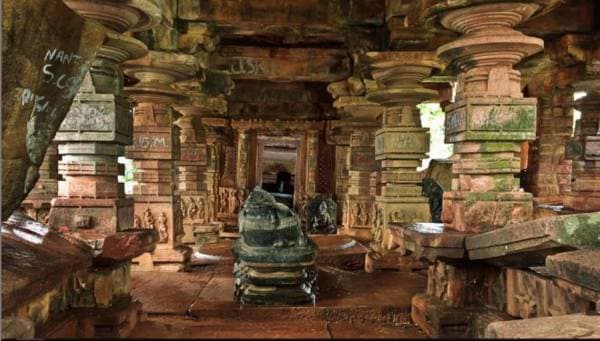Kohinoor

What do you see in this picture? A ruined, broken temple?
But this temple is very special. This beautiful Thousand Pillar temple (located near Warangal), built by the Kakatiya dynasty, which is now in ruins once housed the famous Kohinoor diamond, which is one of the largest cut diamonds in the world.
Imagine how beautiful this temple would have looked in its full glory during the heydays of Kakatiya Golden age of Telangana and Andhra.
During the early 14th century, Alauddin Khilji and his sex slave/ commander Malik Kafur led an invasion of Warangal. They destroyed this temple and looted the Kohinoor diamond.
The temple was renovated almost immediately but it was again raided and destroyed by Muhammad Bin Tughlaq during his Jihad of 1323 CE. The original temple has been in ruins since then.
We do not really know what happened to Kohinoor after this event. The next mention of it comes from Baburnama. To escape his wrath, the family of the king of Gwalior made a voluntary offering to Humayun.
Babar notes: “they made him a voluntary offering of a mass of jewels and valuables, amongst which was the famous diamond which [Sultan] Ala’ ud-Din [Khalji] must have brought” (Baburnama, translated by Susannah Beveridge, penguin 2006, page 279)
Source: https://trueindologytwitter.wordpress.com/2020/03/21/the-kohinoor-diamond-from-the-kakatiya-temple/
Kohinoor is a foreign name given to our diamond by invaders and colonialists. The Hindus of earlier days called it by the name Syamantaka(स्यमन्तक). Hindus of Medieval India identified Kohinoor with the jewel known as Syamantaka(स्यमन्तक) belonging to Lord Krishna’s father-in-law as described in Bhagavata Purana. They persuaded Ranjit Singh to give it back to its rightful owner Krishna (Puri Jagannath).
Source: https://twitter.com/BharadwajAgain/status/1568894125935828994